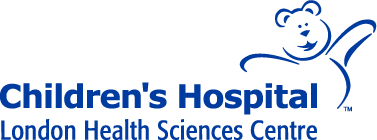Disclaimer to the Online Edition
This Manual has been designed for use in the NICU at London Health Sciences Centre (LHSC), London, Ontario, Canada, and represents clinical practice at this institution. The information contained within the Manual may not be applicable to other centres. If users of this Manual are not familiar with a drug, it is recommended that the official monograph be consulted before it is prescribed and administered. Any user of this information is advised that the contributors, Editor and LHSC are not responsible for any errors or omissions, and / or any consequences arising from the use of the information in this Manual.
glucagon
Indication
- Treatment of hypoglycemia which is unresponsive to routine management (where administration of a total of 12 to 15 mg glucose/kg/min cannot maintain normal blood glucose levels)
Dosage Guidelines
- 0.025 – 0.1 mg/kg/dose IV/subcutaneous/IM q20minutes prn (Maximum total dose of 1 mg/day)
- IV continuous infusion: 0.5 – 1 mg/24 hours (0.5-1 mL/hr) (Maximum dose 1.5 mg/day)
Administration
- IV direct over 3-5 minutes
- IV continuous infusion
- IM
- subcutaneous
Adverse Effects
- Hyponatremia, nausea and vomiting, hypotension, tachycardia and ileus
- Rebound hypoglycemia
Comments
- IV glucose should be administered before clinical response to glucagon may be assessed
- 1 unit of glucagon = 1 mg of glucagon
- Glucagon is incompatible with electrolyte-containing solutions; therefore, do not administer with solutions which contain NaCl or KCl
- Monitor heart rate due to positive inotropic/chronotropic action
- Maternal use of beta-blockers may cause increased resistance to glucagon treatment
- Slowly taper glucagon to prevent rebound hypoglycemia
Supplied As
- 1 mg vial for injection
- 0.04 mg/mL patient specific syringe, prepared by Pharmacy
References
LexiComp Sick Kids, LexiComp Pediatric and Neonatal, Neofax
